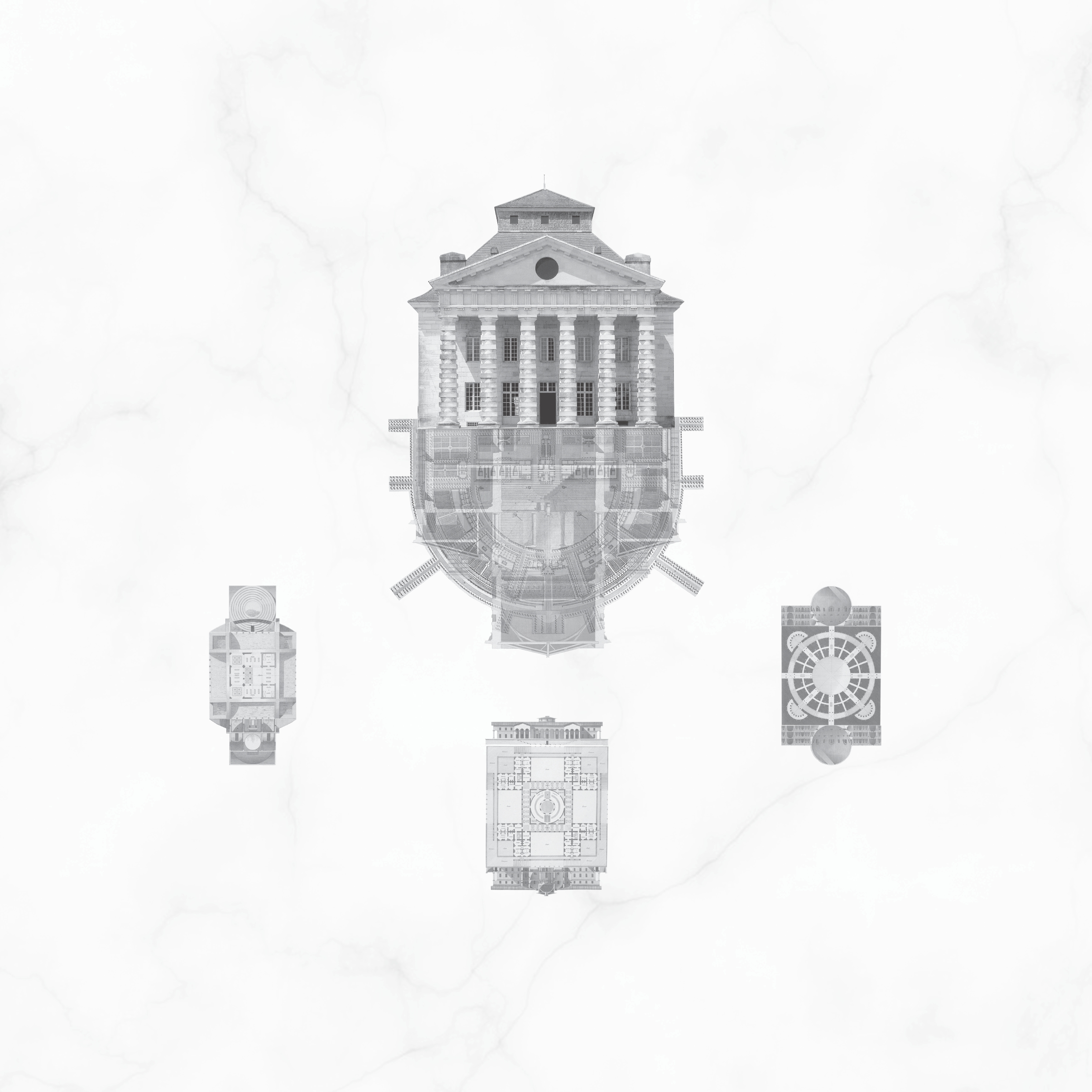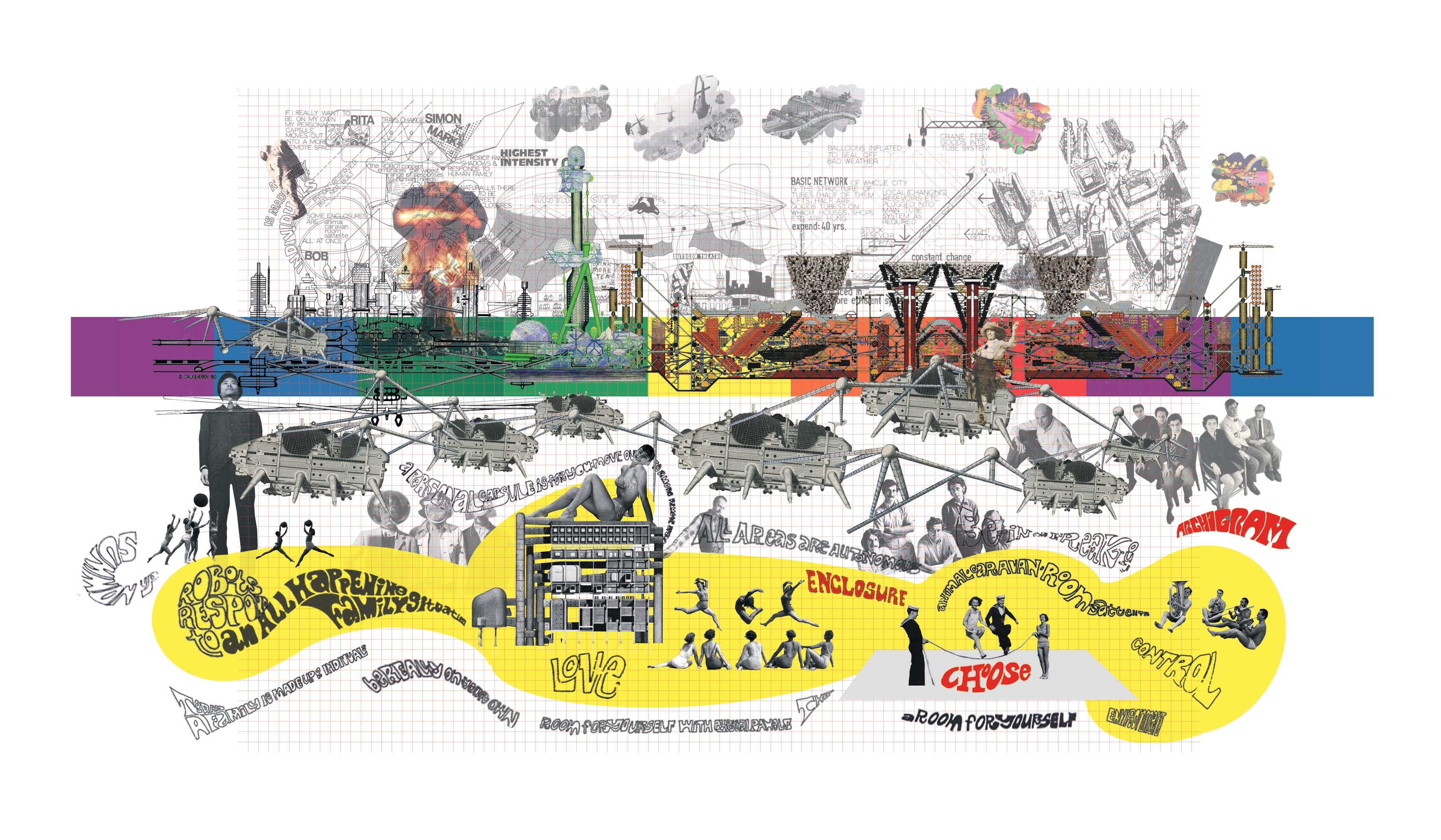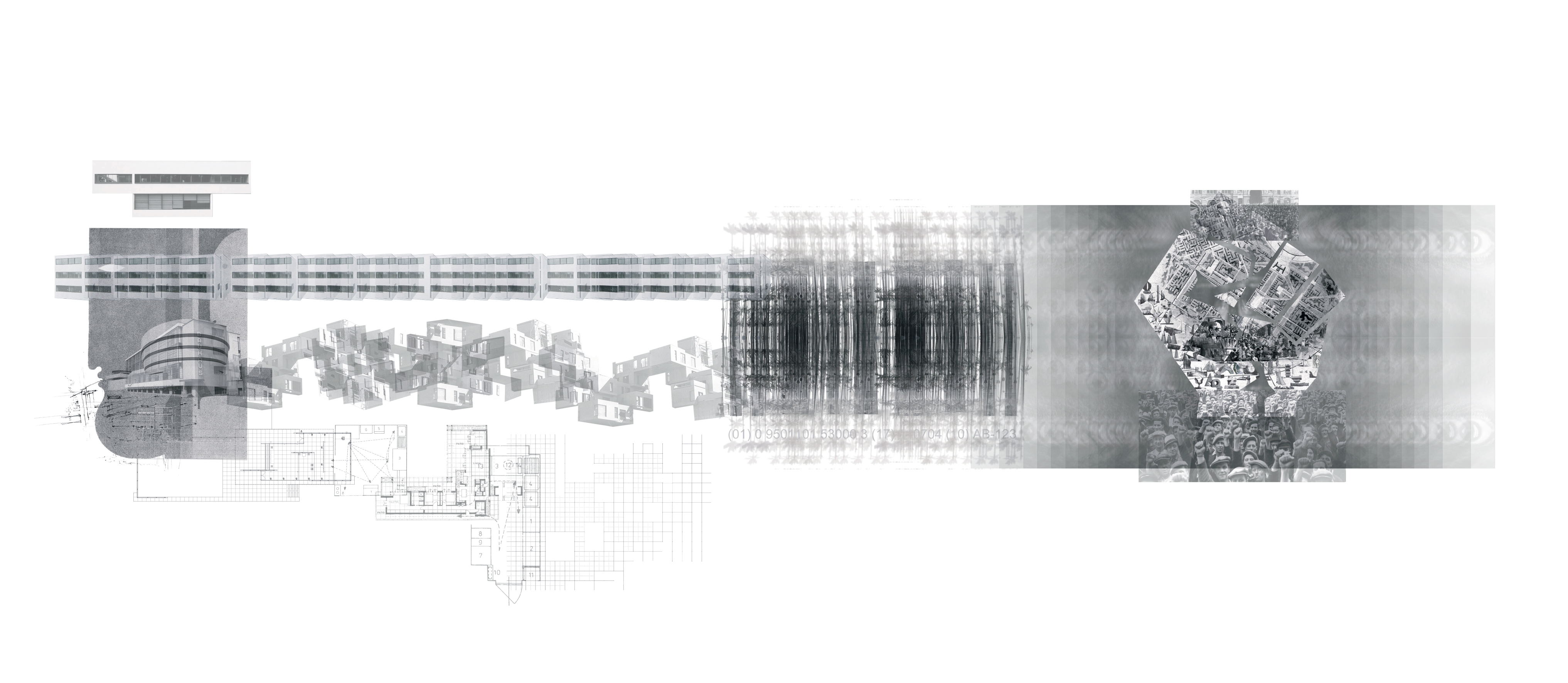ARCHITECTURE AND UTOPIAS
The Relationship between Society, Space and Politics

The relationship between architecture and politics has manifested itself through different conditions over different periods of time. Throughout history, politics in architecture can be seen through the emergence of new design movements, the construction of prestigious monuments, the work of individual architects but especially through utopias. Utopias in general represent an attempt to reinterpret the future and a form of critique of social, political, economical conditions and norms of that period. However, nearly all utopian projects have remained theoretical and were never realized as they were either too complicated for construction or too daring to find enough supporters.
In the present work, utopian projects from the last 250 years that were created in specific political environments were studied. The projects were analyzed to gauge their success or failure in terms of realization or further development. For centuries people have been writing books and theories about ideal utopian societies expressing criticism towards their current political environment. As early as 350 BC, Plato wrote The Republic, presenting a new form of society and thereby criticizing and questioning the way society had organized itself up until then. Further research is amplifying the transformation of political ideals and its influence on architects and architecture. Starting from the Revolutions in the late 18th century to the advancement of the Industrialization in the 19th century, the rise of totalitarian states to capitalism and ending with the transition of liberalistic states towards neoliberalism.
It is to be questioned to which degree an architect and his design project can remain independent and indifferent towards politics and whether a shift from a place of creation to obsequiousness takes place.
In the present work, utopian projects from the last 250 years that were created in specific political environments were studied. The projects were analyzed to gauge their success or failure in terms of realization or further development. For centuries people have been writing books and theories about ideal utopian societies expressing criticism towards their current political environment. As early as 350 BC, Plato wrote The Republic, presenting a new form of society and thereby criticizing and questioning the way society had organized itself up until then. Further research is amplifying the transformation of political ideals and its influence on architects and architecture. Starting from the Revolutions in the late 18th century to the advancement of the Industrialization in the 19th century, the rise of totalitarian states to capitalism and ending with the transition of liberalistic states towards neoliberalism.
It is to be questioned to which degree an architect and his design project can remain independent and indifferent towards politics and whether a shift from a place of creation to obsequiousness takes place.

Plato - The Republic
Plato - The Republic
The Analogy of City and Soul
(380 BC)
(380 BC)

Sir Thomas More – Utopia
“A little, true book, both beneficial and enjoyable, about how things should be in the new island Utopia”
(1516)
(1516)

Claude-Nicolas Ledoux
Claude-Nicolas Ledoux
Royal Saltwork at Arc-et-Senans and the City of Chaux
(End 18th Century)
(End 18th Century)

Étienne-Louis Boullée
Utopia as a monument
(End 18th Century)
(End 18th Century)

Utopian Socialism
Charles Fourier and Robert Owen
(Beginning of the 19th century)
(Beginning of the 19th century)

Ebenezer Howard
Ebenezer Howard
Garden City (1898)

Le Corbusier
Ville Contemporaine — Plan Voisin — Ville Radieuse (1922–30)

Frank Lloyd Wright
Broadacre City (1932)

Yakov Chernikhov,
Constructivist Architecture
Constructivist Architecture
Architecture Fantasies (1920s)

Utopian Totalitarianism Architecture
Utopias in World War 2

Metabolism
Post War Utopias

Archigram
Technology and the Total Environment (1960s)

Superstudio
The Continuous Monument
The Continuous Monument
L’utopia è morta viva l’ utopia! (1960s)

The Crisis of Utopia
The Crisis of the grand projects
Corporate Monuments
Silicon Valley
The determination of the importance of utopian projects cannot rest on their implementation. Whether a project was built or not is of lesser importance than the ideas the project communicates. Most of the built utopian projects have failed in hindsight due to their lack in spontaneous regeneration or in autocracy in moderating. Utopian projects can much rather be seen as the starting point to a discussion in which the creator invites the viewer to engage in a conversation in which he wants to question certain opinions, ideas, habits or traditions. The purpose is to bring new ideas into conversation and challenge present and future problems with innovative new thinking.
Master Thesis 2019
Supervised by Univ.Prof. Dipl.-Ing. Mag.phil. Dr.phil. Peter Mörtenböck
Technical University of Vienna,
Institute of Art and Design, Visual Culture Unit
Supervised by Univ.Prof. Dipl.-Ing. Mag.phil. Dr.phil. Peter Mörtenböck
Technical University of Vienna,
Institute of Art and Design, Visual Culture Unit